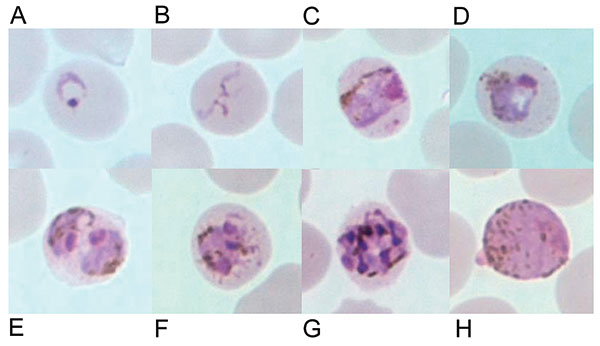Volume 10, Number 12—December 2004
Dispatch
Naturally Acquired Plasmodium knowlesi Malaria in Human, Thailand
Figure 1

Figure 1. Giemsa-stained thin blood films depicting A) ring stage, B) tenue form of young trophozoite, C) band-shaped growing trophozoite, D) growing trophozoite with little or no amoeboid activity, E) double growing trophozoites, F) early schizont, G) late schizont in an erythrocyte with fimbriated margins, and H) mature macrogametocyte. Discernible Sinton and Mulligan stippling is in C, D, and F.
Page created: April 14, 2011
Page updated: April 14, 2011
Page reviewed: April 14, 2011
The conclusions, findings, and opinions expressed by authors contributing to this journal do not necessarily reflect the official position of the U.S. Department of Health and Human Services, the Public Health Service, the Centers for Disease Control and Prevention, or the authors' affiliated institutions. Use of trade names is for identification only and does not imply endorsement by any of the groups named above.